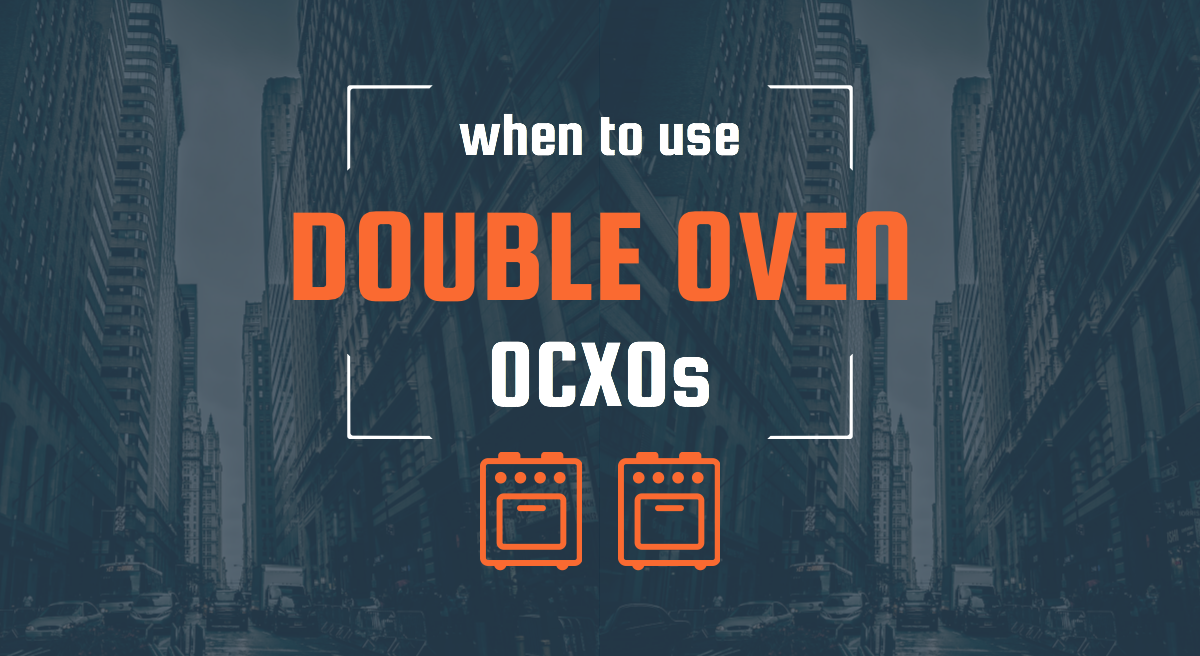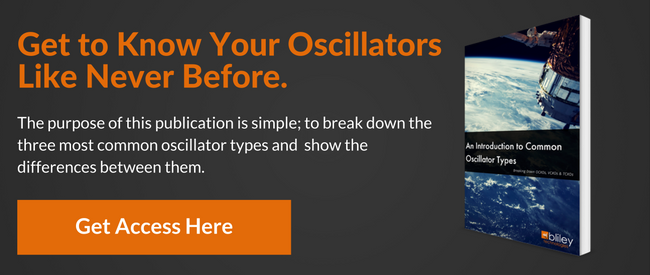
One is definitely the loneliest number. So what's better, a single (OCXO) or double oven controlled crystal oscillator (DOCXO)?
Before you jump up and say, "give me the double helping," you should know whether your specific application needs a DOCXO.
Since the need for frequency stability will only increase in the future, the base stations and OCXOs of the 50 parts per billion class are no longer able to offer a high enough degree of precision.
To achieve a stability of less than 1 ppb, you may want to consider using a DOCXO in your design or application. In this article, we'll discuss when and why a DOCXO may be needed.
Advantages & Disadvantages of DOCXOs
The thermal quality of an OCXO is defined as the relationship between the fluctuations of the ambient temperature and the component temperature. DOCXOs can hold the set point temperature to within ±0.10°C.
The thermal quality offered by a regular OCXO is not good enough to handle increasing frequency loads. This made the development of an OCXO with improved heating concepts essential. Thus, the double OCXO was born! Since its development, it has been put to a wide range of uses.
In addition to excellent thermal quality, the double oven controlled crystal oscillator can also provide you with:
- Fast warm up time
- Low power consumption
- Good phase noise
- Long-term stability for the frequency
- Multiple supply voltage options
There are some drawbacks to using a DOCXO, however. Since they're made by putting an OCXO inside another package, they typically require a larger package size, consume more power, and cost more money. You'll need to determine whether these issues are more important than achieving tighter stabilities.
Related: Crystal Oscillators: The Beginner's Guide (OCXO, TCXO, VCXO, & Clocks)
Applications of DOCXOs
Since its development, it has been put to a wide range of uses. Some common applications include:
Instrument Reference
This is an area of performance which demands the most accurate representation of figures for the instrument based on what the data tells the device. In order to work to its optimum quality, the use of a DOCXO has become imperative in many industries which make use of this technology.
Microwave Communication
Another application for the DOCXO is in microwave communication, which makes use of several frequencies to get the work done. As the number of frequencies that are being put to use increases along with the number of data loads that a single device is expected to bear, switching from OCXOs to DOCXOs is a natural evolution
Clock Reference in Microwave Source Signal
DOCXOs are also used to generate of microwave source signals. The main reason for this is their clean generation of source signals with the least amount of interference.
Test & Measurement
Many industries, including medical and automotive, use DOCXOs in instruments to provide the most accurate ratings and readings for lab test results.
Telecom Systems
The telecom industry has become increasingly more automated and requires telecom devices to deal with large workloads over a wide range of frequencies. DOCXOs are used to meet this demand and maintain a stable frequency for all calls.
Are DOCXOs Right for Your Project?
More potential DOCXO applications are being explored and developers are researching new ways to provide extremely precise frequency references where the resonator operates at a constant temperature. The use of the DOCXO has yet to reach its full potential, and only the future will reveal how the scientific community puts it to additional use.
Looking for the perfect crystal oscillator for your next project? Explore our full line of frequency control devices or contact our team today to discuss your needs.






